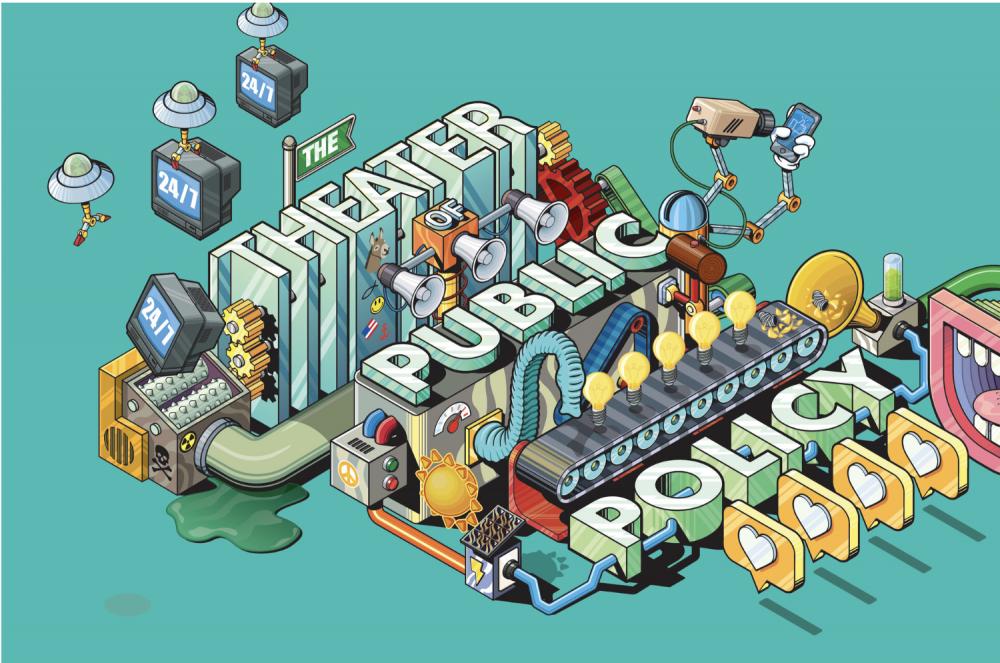One of my obligatory visits after becoming Chairman of the Federal Communications Commission was to Alaskan villages that were being transformed by communications technology. I can remember going into a very remote village store and seeing videocassette movies straight from Hollywood. More than just communications was being transformed.
Alaska’s subsistence farmers and fishermen were in nature’s loop—overfish or hunt or plant and nature’s bounty will disappear. The next generation was losing its connection.
In the “lower 48”, as Alaskans say, most people lost their organic connection to nature decades ago. The intersecting lines of production, storage, transportation and distribution and their effect on nature is barely understood.
Yet, if we turn to our human-made infrastructure, the story is different. In 2018 Gallup reported that, “Infrastructure spending has bipartisan support: in addition to winning broad national support, infrastructure renewal sparked majority support from both major parties last year.”
As this political consensus translates into another trillion dollar package, can we afford to compartmentalize the importance of nature’s infrastructure? What about the disappearance of pollinators and birds? When we abolish natural settings they disappear. And what happens when the plant life which helps to balance atmospheric gasses is largely replaced by the plow, chemicals or some version of concrete or hard metals?
Ultimately, the integrity of nature is often a neighborhood question. Governments can seek to regulate, but day-to-day attitudes are extremely important. And, they ultimately translate into who we elect.
One easy attitude test is litter. Survey the rights-of-way before and after the “Do Not Litter” signs for attitude. And when you are driving or walking along streams, creeks, ditches and the like do you see tree rows? Trees are a first line defense against pollutants while providing an important CO2 sink and shade for the waterway. And, take a look at the larger water basin. Basins are plant nurseries. Do they exist or are they constrained by some form of engineered compaction?
Collectively we watched as the Cuyahoga River southeast of Cleveland actually caught fire. Yes, human actions or inactions caused water to burn. We learned causality in high school chemistry as chemical elements were altered. I recall guys loved to cause minor explosions.
If attitude and individual approaches toward how we live our lives are important, our concerted action can be pivotal.
Ducks Unlimited (DU) is a good example of neighborhood attitudes writ large. It is also proof that individuals sharing a common goal can have an enormous impact on nature.
A New York Times article in September of 2018, The Crisis for Birds Is a Crisis for Us All began its review of a comprehensive study by scientists covering the United States and Canada with this preface: “Nearly one-third of the wild birds in the United States and Canada have vanished since 1970, a staggering loss that suggests the very fabric of North America’s ecosystem is unraveling.”
The study found an important outlier: “Fortunately, it’s not all bad news. Populations of North American ducks and geese have grown by 56 percent since 1970, according to the Science paper, and this is not an accident. During the first half of the 20th century, hunters became deeply concerned about declines in duck populations every bit as severe as those we’re witnessing among common songbirds today. The United States and Canada responded with laws to protect wetlands and collaborated with Mexico to safeguard migrating waterfowl. Conservation management became increasingly driven by science. Private philanthropy, especially by Ducks Unlimited, generated significant financial support for wetlands acquisitions. Millions of additional acres of wetlands were restored and protected by the federal and state governments. The result: Waterfowl populations are booming today.”
DU has protected or restored 14 million acres of wetland. And DU Canada reports: “Canada’s wetlands store approximately 150 billion tons of carbon. That’s equivalent to the emissions of roughly six billion cars over 20 years.”
If we turn to farmland use it is now mostly under the corporate plow, owned by entities seeking to maximize return. Iowa State University Farmland Value Survey reports a 346% increase in cost per acre since 1981. It further noted that the investors “..…favor conventional agriculture—the kind that uses the agro-chemicals, mono-cropping, and extensive tilling that continue to degrade American farmland. For financial investors, commodity crops are king, and it’s hard to imagine that they will change their minds anytime soon.”
As I turn back to my own neighborhood, the Eastern Shore of the Chesapeake Bay, I am encouraged by the leadership of ShoreRivers, the Eastern Shore Land Conservancy and Chesapeake Wildlife Heritage and the splendid work they are doing to restore and protect. Among other initiatives, they work with the farm community to filter runoff, create buffers and convert farmland to natural habitats.
Nature’s gifts are expressed in many ways. Poets, lyricists, and, most especially visual artists enliven our understanding and imagination. One way to appreciate nature is to understand it the way a subsistence forager in Alaska must.
After-note: It is not possible to assess the challenges to biodiversity and climate with a column or two. I have reached this point by pairing what I know through personal experience with what is projected or recommended by others. The next columns will be even more specific.
A healthy earth requires us to both comprehend our role and take action. As to comprehension, let me suggest: The Creation: An Appeal to Save Life on Earth, by E.O. Wilson.
Al Sikes is the former Chair of the Federal Communications Commission under George H.W. Bush. Al recently published Culture Leads Leaders Follow published by Koehler Books.



Write a Letter to the Editor on this Article
We encourage readers to offer their point of view on this article by submitting the following form. Editing is sometimes necessary and is done at the discretion of the editorial staff.